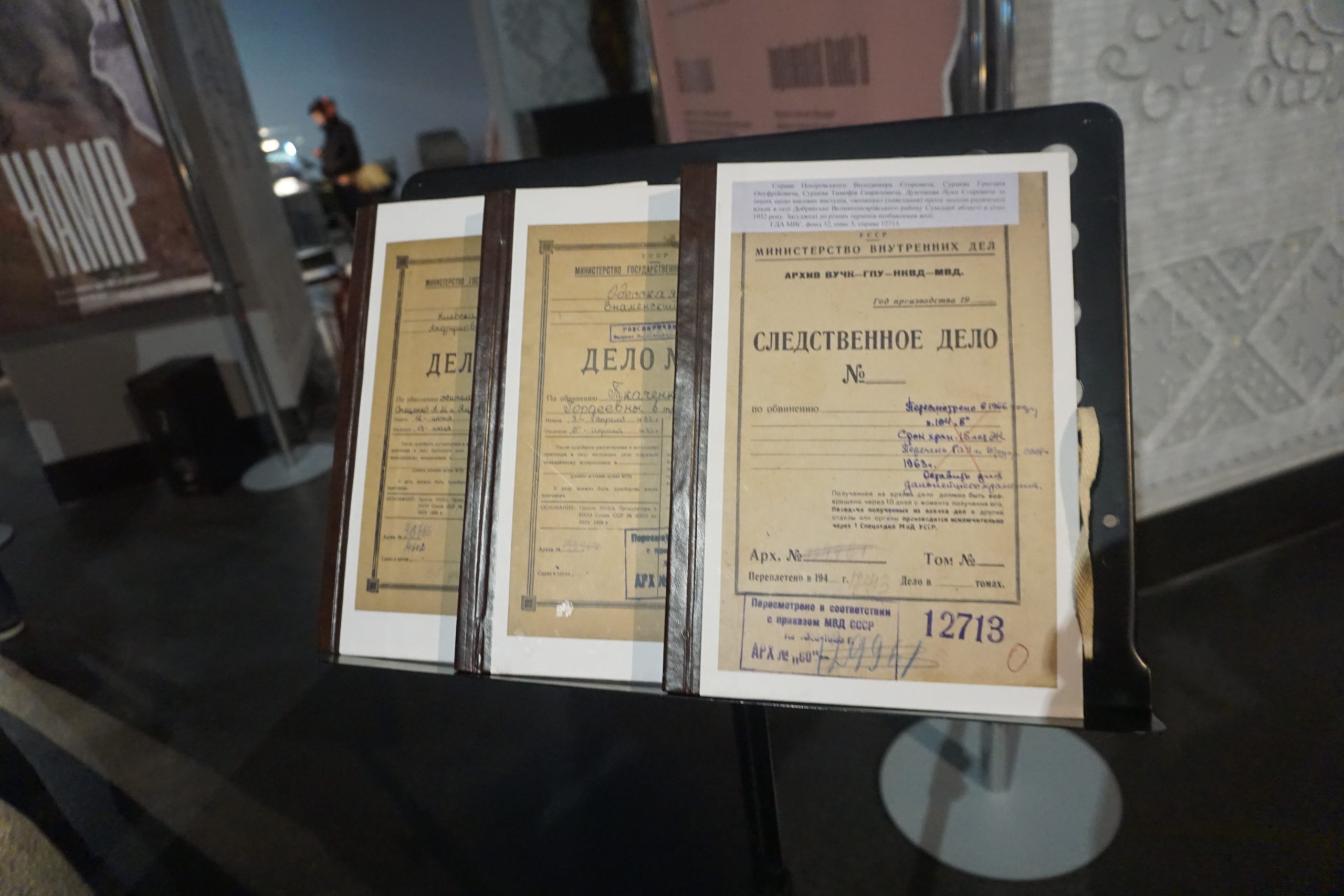The Holodomor Museum received 1,022 criminal cases from the Holodomor period
The Ministry of Internal Affairs of Ukraine handed over 1,022 digitized criminal cases from the Holodomor period to the Holodomor Museum. The handover ceremony took place as part of the presentation of the “Intent” exhibition on 23 November.
“Today, the Ministry of Internal Affairs is handing over to the Museum an extremely vast fund of cases that had not been available to researchers until now,” Inna Yashchuk, State Secretary of the Ministry of Internal Affairs of Ukraine, said. – 99 per cent of these cases concern cannibalism.” At the same time, Ms Inna emphasizes, they give an idea of how “hunger is a terrible weapon that affects a person’s consciousness and leads to madness.”
Inna Yashchuk emphasized that these cases should be a warning against the possible repetition of such crimes in the future. “A crime that is not punished can be repeated again. And what is happening now on the territory of our country became possible because the crime of Holodomor was not punished in time. I believe that the opening of these criminal cases will reject the hesitation of some countries to recognise the Holodomor as a genocide,” added Inna Yashchuk.
Mykhailo Kostiv and Roman Tesliuk, researchers of the Holodomor Museum, worked on the digitization of criminal cases”
“In the Sectoral State Archive of the Ministry of Internal Affairs of Ukraine in the 32nd fund, a unique set of archival and criminal cases on cannibalism in 1932-1933 is stored. More than a thousand cases are a crucial source for studying the terrible phenomenon of cannibalism, which became possible due to the policies of the communist regime, – comments the head of the Genocide, Crimes Against Humanity and War Crimes Research Department of the Museum Mykhailo Kostiv. – The fund contains documents from various regions of the Ukrainian SSR. These are the materials of the investigation conducted by both the “People’s police” and the OGPU. This array of documents is directly important for the study of cannibalism in 1932–1933. It can also be used to study other phenomena, for example, the everyday life of the late 1920s and early 1930s.”
The peculiarity of these cases, qualified under Article 174 of the Criminal Code of the Ukrainian SSR, is that they met the requirements of justice from the outside. A formal investigation was conducted, the fact of the crime was established, and the perpetrators were identified and punished. In fact, the regime condemned its victims for murder. However, the investigation did not seek answers to the question of what brought the person to such a state, no psychiatric examinations were conducted, and it was not established whether the person who had been starved for a long time was even sane. So, there is still a lot of work for scholars. And not only historians but also specialists in other fields, in particular, the fields of medicine, physiology, and psychology.”
“These cases will give our historians an opportunity to investigate the impact of the communist regime, which created a man-made famine that drove Ukrainians to a state of despair and beyond the limits of human morality. The motivations of cannibalism were dictated by the doom of people,” the Acting Director General of the National Holodomor Genocide Museum, Lesia Hasydzhak, said.
The project became possible thanks to philanthropic support with technology from the public figure Oleksii Novikov and the Public Union “Ukrainian Cultural Heritage”. For the work of scholars, they provided two modern scanners, which made it possible to digitize a vast array of documents in a short time.
We are sincerely grateful to everyone involved, in particular, the leadership of the Ministry of Internal Affairs of Ukraine, the State Secretary of the Ministry of Internal Affairs of Ukraine, Inna Yashchuk, the Department of Communication of the Ministry of Internal Affairs and Andrii Zahorulko, the director of the Archives of National Memory Ihor Kulyk, thanks to whom this project became possible and successfully implemented.
We will remind you that in 2020, the Holodomor Museum and the Ministry of Internal Affairs of Ukraine signed a Memorandum of Cooperation. Within the framework of this cooperation, in previous years, a number of criminal cases were initiated under the so-called “law of 5 ears of grain”, and articles on cannibalism and other crimes of the Holodomor period were transferred to the museum. These are unique materials that were classified at one time by the communist totalitarian regime because they are evidence of the crime of genocide committed against Ukrainians and its scale, reveal the mechanisms of its commission, and debunk Soviet myths about the Holodomor.
